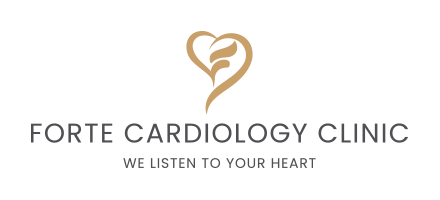Cardiovascular diseases pose a significant threat to global health, making understanding and addressing the underlying risk factors imperative. By comprehending these factors, individuals can proactively mitigate risk, fostering heart health and overall well-being.
Hypertension
Hypertension, commonly known as high blood pressure, is a chronic medical condition characterised by elevated blood pressure levels in the arteries. It is a prevalent health issue globally, affecting a substantial portion of the population. Often referred to as the “silent killer,” hypertension may go unnoticed for years, gradually damaging the cardiovascular system.
Blood Pressure and Cardiovascular Health
Blood pressure is the force exerted by circulating blood against the walls of the arteries. It is measured in millimetres of mercury (mmHg) and expressed as two values: systolic (pressure during heartbeats) over diastolic (pressure between heartbeats). Normal blood pressure is typically around 120/80 mmHg. Hypertension is diagnosed when blood pressure consistently exceeds 130/80 mmHg.
Maintaining optimal blood pressure is crucial for cardiovascular health. Prolonged elevation can strain arteries, leading to damage and increasing the risk of severe conditions, including heart disease, stroke, and kidney problems.
Consequences of Uncontrolled Hypertension
Uncontrolled hypertension can have severe consequences on various organs and systems:
Cardiovascular System – Hypertension contributes to the development of atherosclerosis (hardening of the arteries), increasing the risk of heart attacks and strokes.
Kidneys – Persistent high blood pressure can damage the kidneys over time, leading to impaired function or even kidney failure.
Eyes – Hypertension may cause damage to the blood vessels in the eyes, leading to vision problems or even blindness.
Brain – Increased blood pressure can result in cerebral blood vessel damage, contributing to cognitive impairment and an elevated risk of dementia.
Lifestyle Changes and Medications for Hypertension Management
Effective management of hypertension involves a combination of lifestyle modifications and, in some cases, medications:
Lifestyle Changes
Dietary Modifications – Adopting a heart-healthy diet rich in fruits, vegetables, whole grains, and lean proteins. Limiting sodium intake is crucial.
Regular Exercise – Regular physical activity helps control weight, lower blood pressure, and improve cardiovascular health.
Stress Management – Implementing stress reduction techniques, such as meditation or yoga, can contribute to blood pressure control.
Medications
Antihypertensive Drugs – Depending on the severity of hypertension, healthcare specialists may prescribe medications such as diuretics, ACE inhibitors, beta-blockers, or calcium channel blockers to help lower blood pressure.
Hyperlipidemia
Cholesterol is a fatty substance crucial for building cells and producing hormones, but an imbalance in its levels can lead to health concerns. Hyperlipidemia refers to elevated blood lipid (fat) levels, particularly cholesterol. Understanding cholesterol and lipid levels is essential for managing cardiovascular health.
Types of Cholesterol (LDL, HDL, Triglycerides)
LDL (Low-Density Lipoprotein)
Description – Often called “bad” cholesterol, LDL carries cholesterol from the liver to the cells.
Implications – Elevated LDL levels contribute to atherosclerosis, the buildup of plaque in arteries, increasing the risk of heart disease.
HDL (High-Density Lipoprotein)
Description – Known as “good” cholesterol, HDL transports cholesterol away from the cells and back to the liver for removal.
Implications – Higher levels of HDL are associated with a lower risk of cardiovascular diseases.
Triglycerides
Description – Triglycerides store excess energy from the diet and release it when needed.
Implications – Elevated triglyceride levels, often associated with unhealthy lifestyles, can contribute to cardiovascular risk.
Role of Hyperlipidemia in Atherosclerosis and Cardiovascular Diseases
Hyperlipidemia plays a pivotal role in the development of atherosclerosis.
Atherosclerosis – Elevated LDL cholesterol leads to plaque accumulation in arterial walls. Over time, this can narrow and harden the arteries, restricting blood flow.
Cardiovascular Diseases – Atherosclerosis increases the risk of heart attacks and strokes by limiting blood flow to vital organs. Uncontrolled hyperlipidemia contributes significantly to the progression of these conditions.
Dietary and Lifestyle Modifications for Managing Cholesterol Levels
Dietary Changes
Heart-Healthy Diet – Adopting a diet rich in fruits, vegetables, whole grains, and lean proteins.
Limiting Saturated and Trans Fats – Reducing the consumption of saturated and trans fats in fried foods, processed snacks, and certain oils.
Regular Exercise
Aerobic Exercise – Engaging in regular physical activity helps raise HDL cholesterol and improves overall cardiovascular health.
Weight Management – Maintaining a healthy weight contributes to better lipid levels.
Smoking Cessation
Impact on HDL – Quitting smoking positively influences HDL cholesterol levels.
Cardiovascular Health – Smoking cessation is crucial for reducing the risk of atherosclerosis-related events.
Medications
Statins and Other Lipid-Lowering Medications – Prescribed when lifestyle changes alone are insufficient to manage hyperlipidemia.
Diabetes
The relationship between diabetes and cardiovascular risk is profound. Individuals with diabetes are at an elevated risk of developing cardiovascular diseases, such as heart attacks and strokes. The connection lies in the impact of diabetes on blood vessels and the body’s ability to regulate blood sugar levels.
Impact of Insulin Resistance on Blood Vessels
Insulin resistance, a hallmark of type 2 diabetes, is pivotal in affecting blood vessels. When cells become resistant to insulin, a hormone that helps regulate blood sugar, it leads to higher glucose levels in the bloodstream. This, in turn, contributes to inflammation and oxidative stress, damaging the lining of blood vessels. Over time, this vascular damage increases the risk of atherosclerosis, where plaque builds up in arteries, narrowing them and restricting blood flow.
Cardiovascular Complications of Uncontrolled Diabetes
Uncontrolled diabetes poses a significant threat to cardiovascular health, resulting in various complications:
- Atherosclerosis The increased risk of atherosclerosis can lead to coronary artery disease, increasing the likelihood of heart attacks.
- Hypertension Diabetes often coexists with high blood pressure, compounding the strain on the cardiovascular system.
- Peripheral Artery Disease Reduced blood flow to the extremities can result in peripheral artery disease, causing pain and increasing the risk of infections and amputations.
- Stroke Diabetes contributes to the formation of blood clots and atherosclerosis, heightening the risk of strokes.
Comprehensive Management Strategies for Diabetic Individuals
Effective management of diabetes involves a holistic approach addressing various aspects:
Blood Sugar Control
Medications – Insulin and oral medications help regulate blood sugar levels.
Monitoring – Regular blood glucose monitoring provides insights for adjusting medication and lifestyle.
Blood Pressure Management
Lifestyle Changes – Adopting a heart-healthy diet low in sodium, regular exercise, and weight management.
Medications – Antihypertensive drugs may be prescribed to control blood pressure.
Cholesterol Management
Statins and Fibrates – Medications to lower LDL cholesterol and triglyceride levels.
Lifestyle Changes – Emphasizing a diet low in saturated and trans fats.
Lifestyle Modifications
Healthy Diet – Embracing a balanced diet rich in fruits, vegetables, whole grains, and lean proteins.
Physical Activity – Regular exercise improves insulin sensitivity and cardiovascular health.
Smoking Cessation – Quitting smoking reduces the risk of cardiovascular complications.
Regular Monitoring and Medical Check-ups
Comprehensive healthcare involves regular monitoring of blood sugar, blood pressure, and cholesterol levels.
Routine check-ups help identify and address potential complications early.
Obstructive Sleep Apnea
Obstructive Sleep Apnea (OSA) is a sleep disorder characterized by recurrent episodes of complete or partial upper airway obstruction during sleep. This leads to disruptions in breathing, causing temporary pauses in airflow. OSA is more prevalent than often recognized, affecting a significant number of individuals worldwide. Its prevalence is higher in specific populations, such as those with obesity or older adults.
Relationship Between OSA and Cardiovascular Health
The relationship between OSA and cardiovascular health is intricate. OSA can contribute to or exacerbate existing cardiovascular conditions. The repeated cycles of oxygen deprivation and arousal from sleep place stress on the cardiovascular system, impacting heart health.
Mechanisms Linking Sleep Apnea to Increased Cardiovascular Risk
- Intermittent Hypoxia Episodes of reduced oxygen levels during apneas lead to intermittent hypoxia. This triggers a cascade of events, including releasing stress hormones, inflammation, and oxidative stress, all contributing to cardiovascular damage.
- Increased Sympathetic Activity OSA stimulates the sympathetic nervous system, leading to elevated blood pressure and heart rate. Over time, this heightened sympathetic activity can contribute to hypertension and other cardiovascular problems.
- Endothelial dysfunction (OSA) is associated with impaired endothelial functioning in the inner lining of blood vessels. Endothelial dysfunction contributes to atherosclerosis and an increased risk of cardiovascular events.
- Insulin Resistance OSA is linked to insulin resistance, a diabetes-related condition. Insulin resistance can further contribute to cardiovascular complications.
Treatment Options and Lifestyle Changes for OSA Management
Continuous Positive Airway Pressure (CPAP)
Description – CPAP therapy involves wearing a mask that delivers a continuous air stream, preventing airway collapse during sleep.
Implications – CPAP is a highly effective treatment for OSA, improving sleep quality and reducing cardiovascular risk.
Bi-level Positive Airway Pressure (BiPAP)
Description – Similar to CPAP but provides different pressure levels for inhalation and exhalation.
Implications – BiPAP is sometimes used for individuals who find CPAP challenging.
Lifestyle Changes
Weight Management – Losing excess weight can reduce the severity of OSA.
Positional Therapy – Sleeping in certain positions may alleviate OSA symptoms for some individuals.
Avoidance of Alcohol and Sedatives – These substances can relax the muscles in the airway, worsening OSA.
Oral Appliances
Description – Devices that reposition the lower jaw and tongue to keep the airway open.
Implications – Oral appliances may be suitable for individuals with mild to moderate OSA or those who cannot tolerate CPAP.
Screening And Diagnosis
Regular health check-ups play a pivotal role in preventive healthcare. These routine examinations are a proactive approach to identifying potential health issues before they become more serious. By engaging in regular check-ups, individuals can work collaboratively with healthcare professionals to manage and mitigate various health risks.
Diagnostic Tests for Hypertension, Hyperlipidemia, Diabetes, and Sleep Apnea
Hypertension
Diagnostic Test – Blood Pressure Measurement
Importance – Routine blood pressure checks are essential for identifying hypertension early. Elevated blood pressure may not present noticeable symptoms, making regular monitoring crucial.
Hyperlipidemia
Diagnostic Tests – Lipid Panel (measuring cholesterol and triglyceride levels)
Importance – Lipid panels help assess cholesterol levels, enabling early intervention to prevent cardiovascular diseases.
Diabetes
Diagnostic Test – Fasting Blood Sugar, Oral Glucose Tolerance Test (OGTT), Hemoglobin A1c
Importance – Early detection of abnormal blood sugar levels aids in diagnosing and managing diabetes, reducing the risk of complications.
Sleep Apnea
Diagnostic Test – Polysomnography (in-lab sleep study), Home Sleep Apnea Testing (HSAT)
Importance – Diagnosing sleep apnea involves evaluating breathing patterns during sleep. Early detection allows for timely intervention, improving sleep quality and preventing associated health risks.






